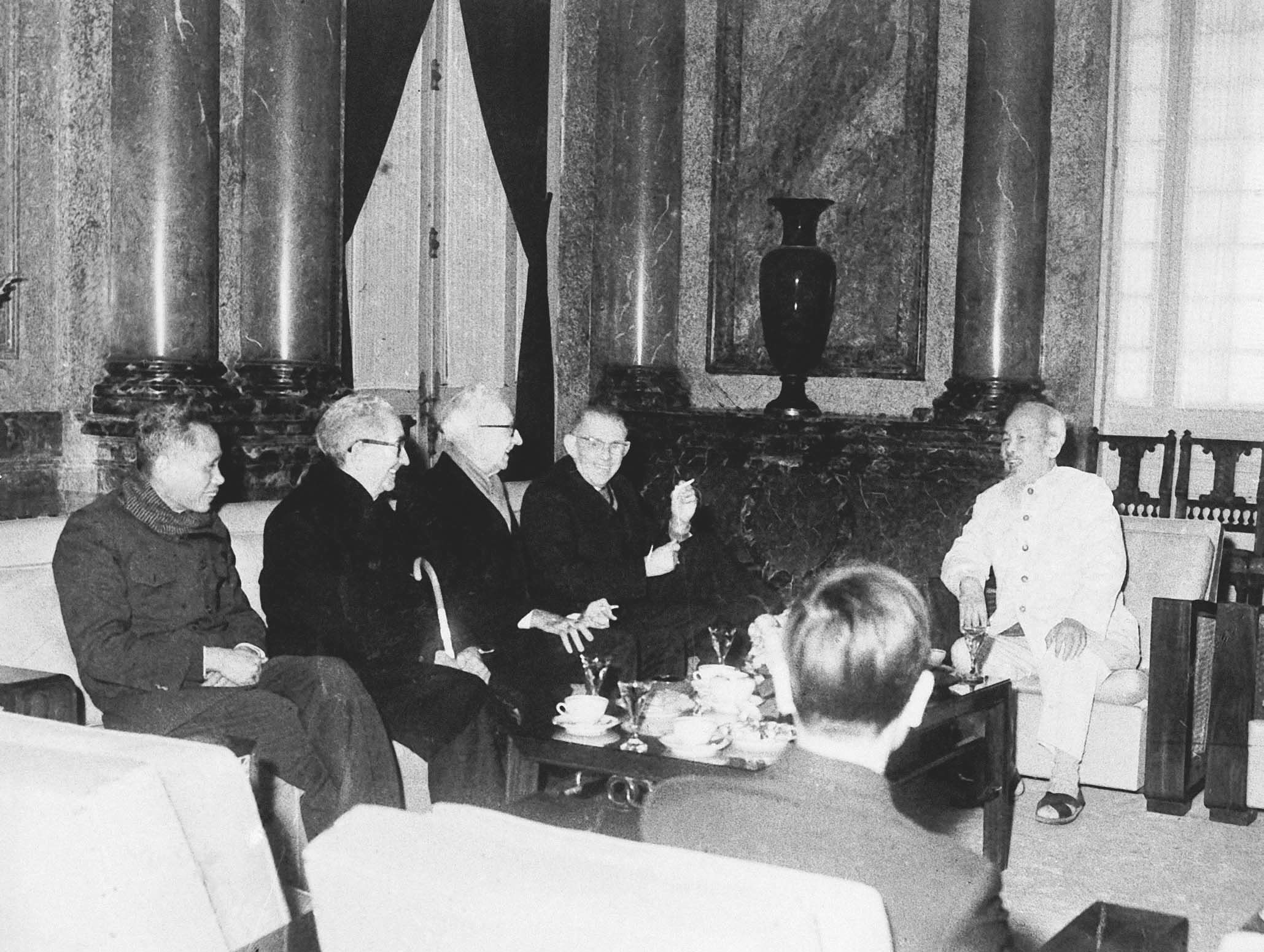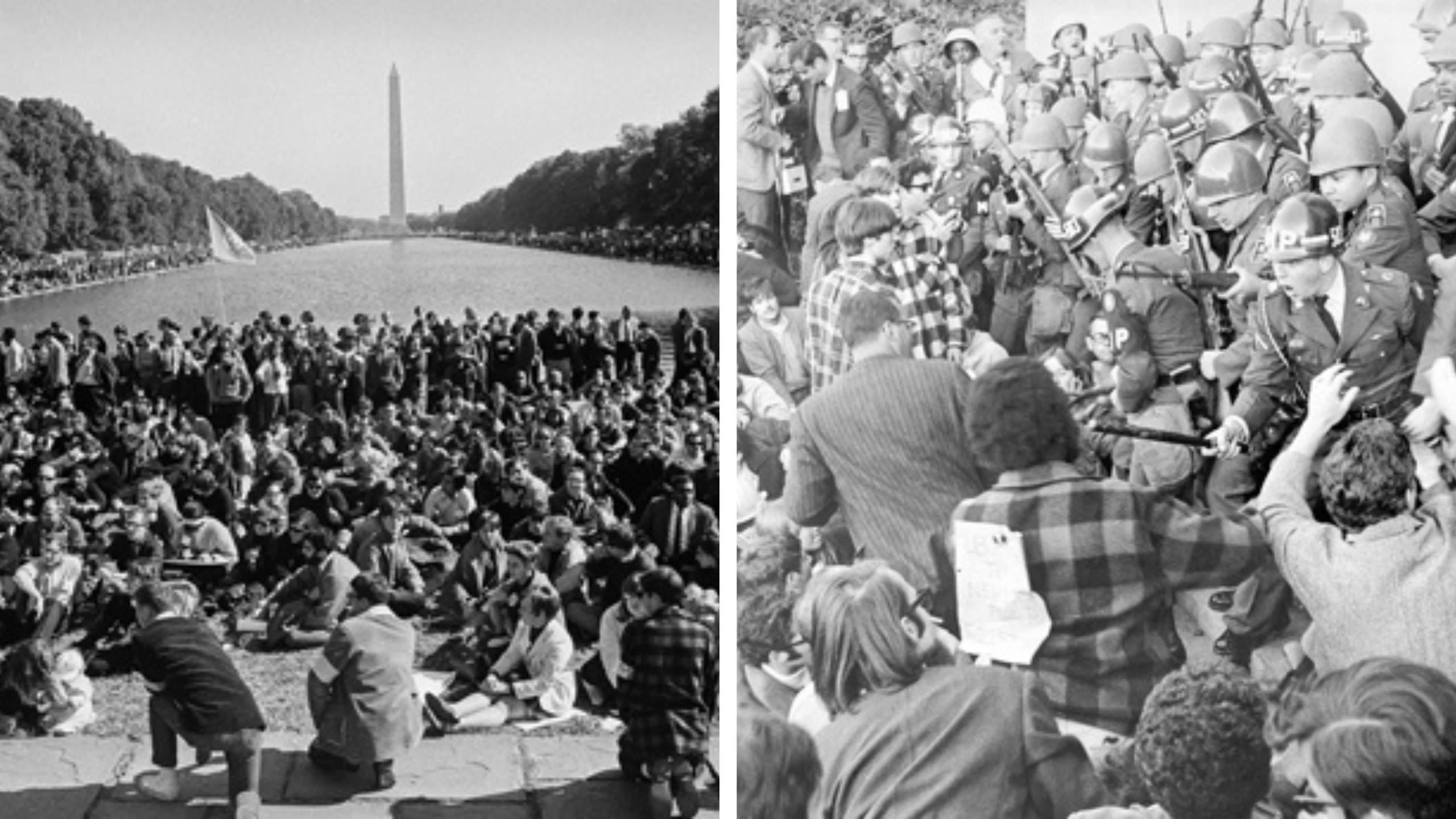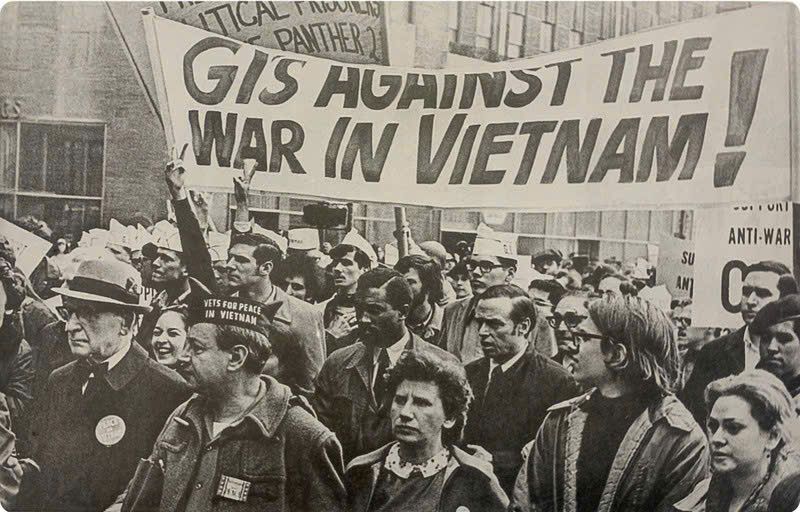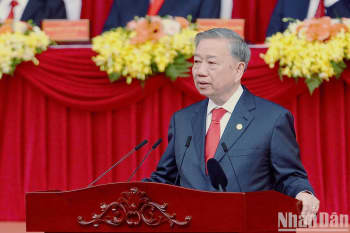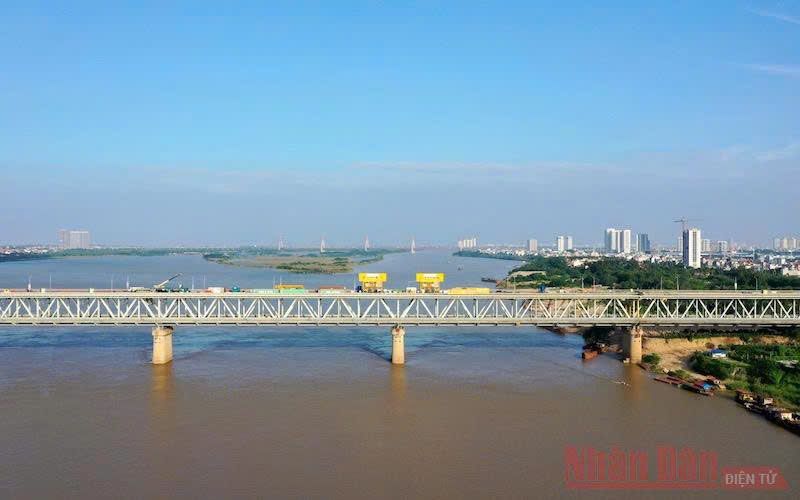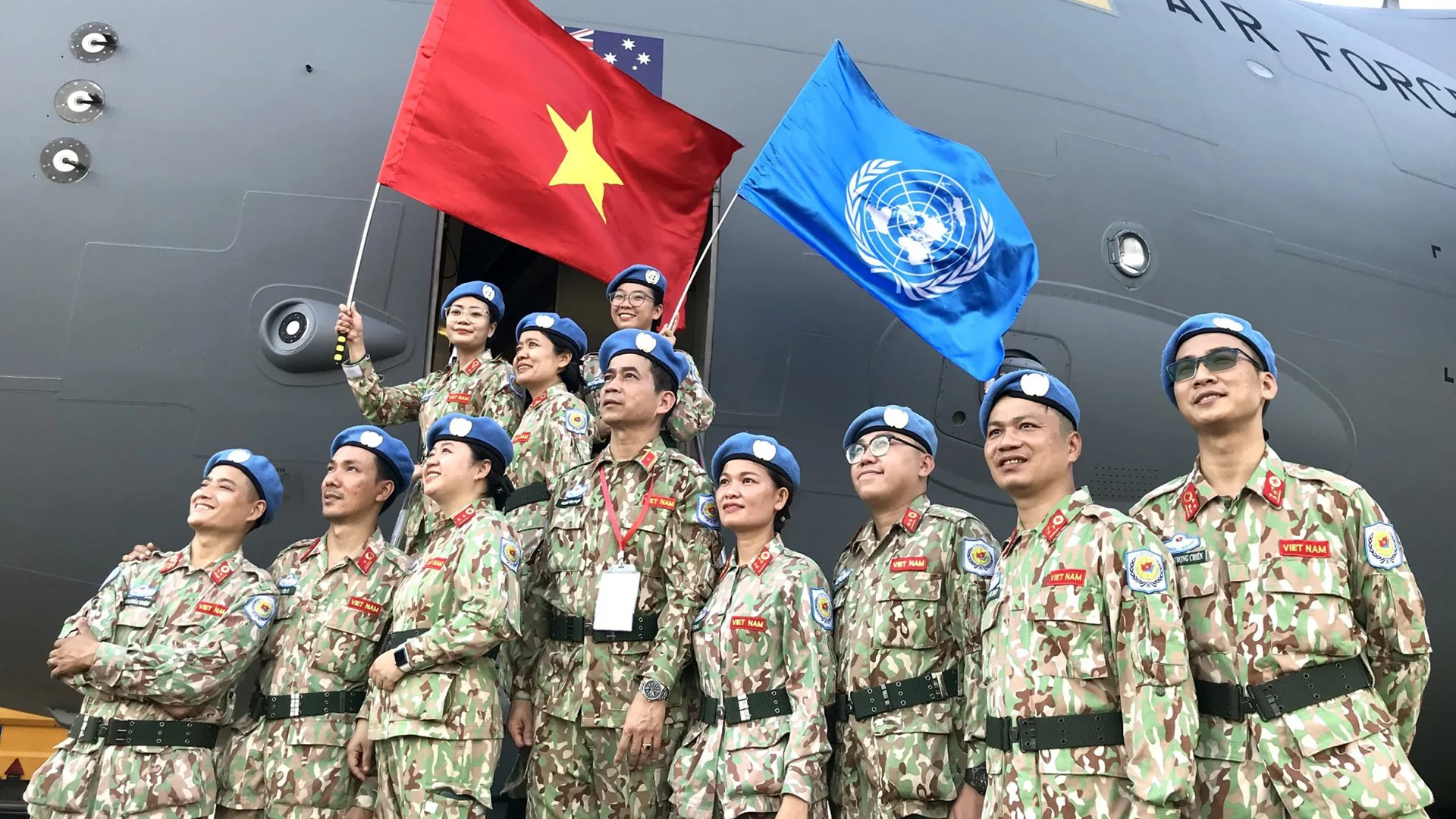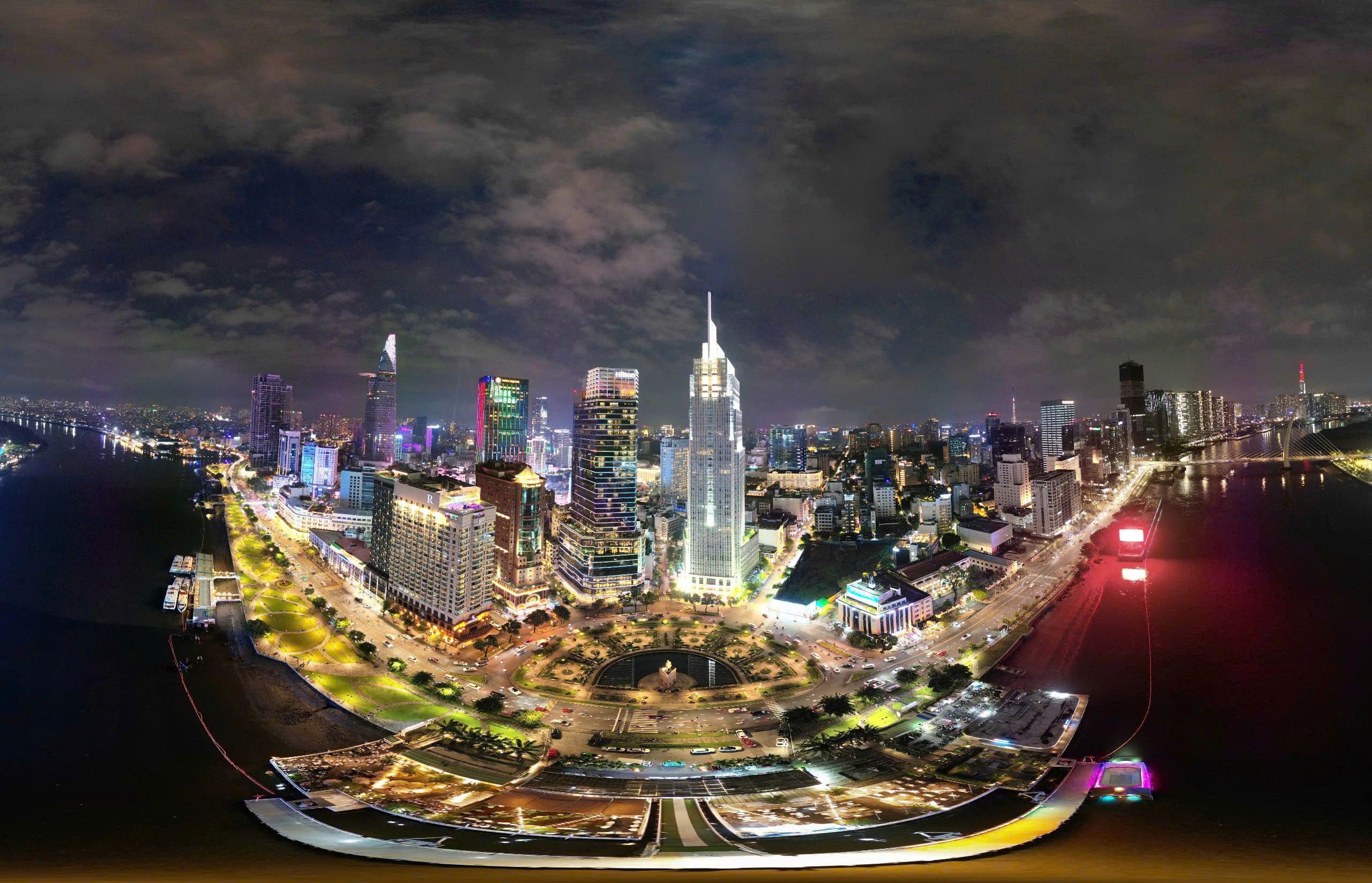International solidarity:
Standing shoulder to shoulder with Vietnam
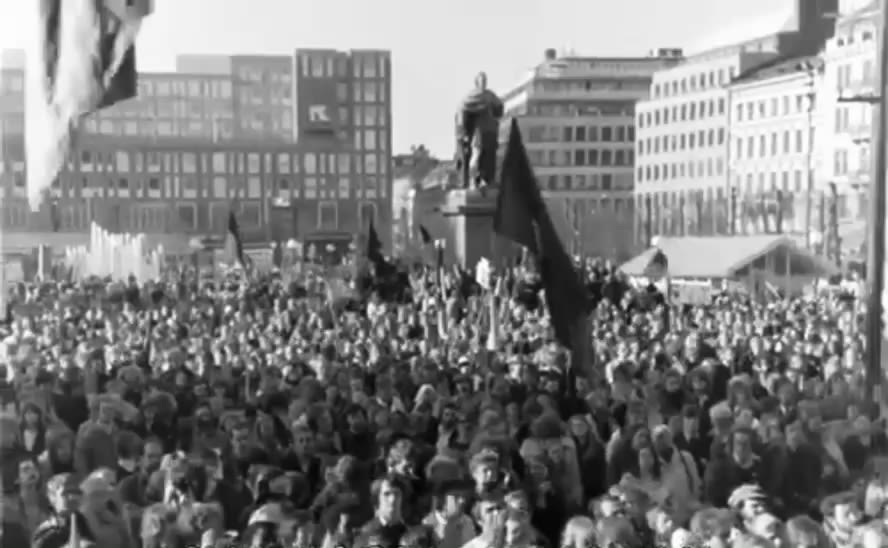
From the arduous years of resistance war to the ongoing journey of nation-building and development, Vietnam has always been accompanied by the heartfelt support of international friends — great arms of solidarity that have been standing with the Vietnamese people on their path toward peace and prosperity.
Anti-Vietnam War movement seeps to all continents
Throughout the arduous years of resistance against the US, the Vietnamese people were never alone in their struggle for independence and freedom. Across continents, from anti-war marches to fundraising campaigns, the voices of revolutionary and progressive forces around the world united in solidarity with Vietnam.
Numerous demonstrations, strikes, and mass movements took place across the former Soviet Union, China, Eastern Europe, and many countries in Asia, Africa, Latin America, and even within the US itself. Youth groups, women's organisations, and workers' unions organised fundraising activities, protest marches, and signature campaigns to petition against the war.
Beyond powerful words and demonstrations, Vietnam received extensive material assistance from its international friends. This tangible support played a crucial role in sustaining the resistance effort against a far superior military power.
The material and technical support provided to Vietnam was immense. The former Soviet Union supplied modern weaponry and equipment, including fighter jets, tanks, armoured personnel carriers (APCs), surface-to-air missile (SAM) launchers, and anti-aircraft guns.
According to publicly available data from the General Staff of the Armed Forces of the Soviet Union, between July 1965 and December 1974, the former Soviet Union sent more than 6,000 generals and officers, along with over 4,500 soldiers and non-commissioned officers, to serve alongside the Vietnamese military and people.
The deployment of the SA-75 Dvina surface-to-air missile systems in mid-1965 significantly bolstered Vietnam’s air defence capabilities.

Alongside Soviet assistance, China also emerged as a major supporter, providing both material supplies and critical infrastructural aid. Supplies included infantry weapons, military equipment, food, medical supplies, and logistics support.
Chinese engineers helped in upgrading key transportation routes along the northern border and constructed critical fuel storage facilities in Lang Son and Quang Ninh.
Between 1968 and early 1975, Vietnam completed a 5,000-kilometre fuel pipeline network, with China contributing over 500 kilometres of pipes and related equipment. This vital infrastructure played a crucial role in sustaining military operations during the later stages of the war.
During the US aerial bombardment of northern Vietnam, the Hanoi–Youyi Guan railway served as a vital lifeline, facilitating the daily transfer of approximately 1,000 tonnes of military aid into Vietnam.
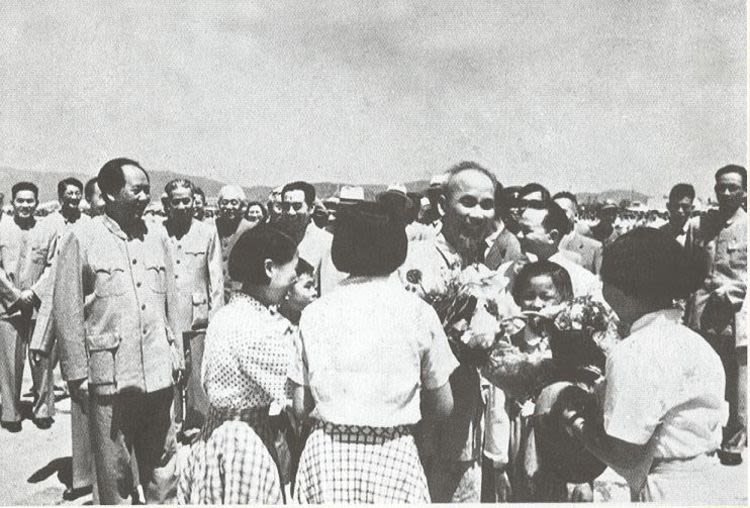
Support also came from other socialist nations. Hungary organised blood donation drives and volunteer enlistment campaigns, while Bulgaria held 245 mass rallies in 1965 alone, including one that gathered 10,000 participants. Meanwhile, Cuba, under the leadership of Fidel Castro, sent military specialists and engineers to assist Vietnam.
"For Vietnam, Cuba is willing to shed its own blood"
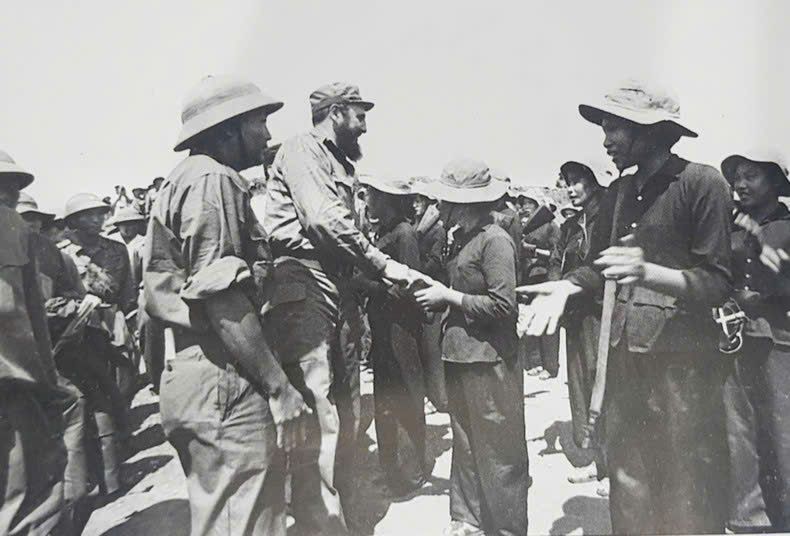
The Democratic People's Republic of Korea (DPRK) dispatched fighter pilots to assist Vietnamese forces, while countries such as Hungary, Poland, Romania, Bulgaria, Czechoslovakia, and the German Democratic Republic contributed critical logistical and technical supplies.
The total volume of international aid to Vietnam during the resistance war against the US is estimated at approximately 2,362,682 tonnes, valued at about 7 billion Soviet roubles.
Within Southeast Asia, Laos and Cambodia stood in steadfast solidarity with Vietnam. The Lao people contributed millions of labour-days to the construction and maintenance of vital supply routes along the Ho Chi Minh Trail, a logistical lifeline for the southern battlefield.
Meanwhile, under the leadership of King Father Norodom Sihanouk, Cambodia facilitated the transport of weapons and essential supplies through the port of Sihanoukville, greatly alleviating Vietnam's logistical challenges and reinforcing its capacity for prolonged resistance.
President Ho Chi Minh receives American intellectuals and public figures opposing the war in Vietnam, 1967. (Photo: hochiminh.vn)
President Ho Chi Minh receives American intellectuals and public figures opposing the war in Vietnam, 1967. (Photo: hochiminh.vn)
Anti-Vietnam War protest in the US. (Photo: VNA)
Anti-Vietnam War protest in the US. (Photo: VNA)
The US' veterans and citizens take to the streets to protest against the US war in Vietnam. (Source: The Paris Agreement 1973 – A Turning Point Toward Peace, Vietnam News Agency Publishing House)
The US' veterans and citizens take to the streets to protest against the US war in Vietnam. (Source: The Paris Agreement 1973 – A Turning Point Toward Peace, Vietnam News Agency Publishing House)
The global anti-war movement also deeply permeated the US' society. Protests against the Vietnam War intensified, particularly among university students and servicemen. Acts of resistance ranged from draft-card burnings to mass demonstrations and the exposure of wartime atrocities. Prominent figures including actress Jane Fonda and civil rights leader Martin Luther King Jr. became vocal critics of American policy. In 1972 alone, New York witnessed a 30,000-strong demonstration demanding the immediate withdrawal of American troops from Vietnam.
Symbolic and emotional acts of protest, including the self-immolations of Norman Morrison and Roger Allen LaPorte, profoundly shook American society and galvanised public opinion.
Across the world, from the establishment of the Bertrand Russell International War Crimes Tribunal to the formation of National Liberation Front (NLF) support organisations in Northern Europe (Sweden, Norway, Denmark, and Finland), the Vietnamese people found steadfast friends in their just struggle.
Speaking on the occasion of Sweden’s presentation of the documentary “Victory Vietnam” to the Vietnam Film Institute – a film capturing the vibrant atmosphere in the Swedish capital, Stockholm, as people celebrated Vietnam’s victory – Swedish Ambassador Johan Ndisi said: "In 1969, amidst the war in Vietnam and profound global challenges, Sweden became the first Western nation to establish diplomatic relations with Vietnam. This decision reflected our enduring belief in peace, mutual respect, and international solidarity."
"In 1969, amidst the war in Vietnam and profound global challenges, Sweden became the first Western nation to establish diplomatic relations with Vietnam. This decision reflected our enduring belief in peace, mutual respect, and international solidarity."
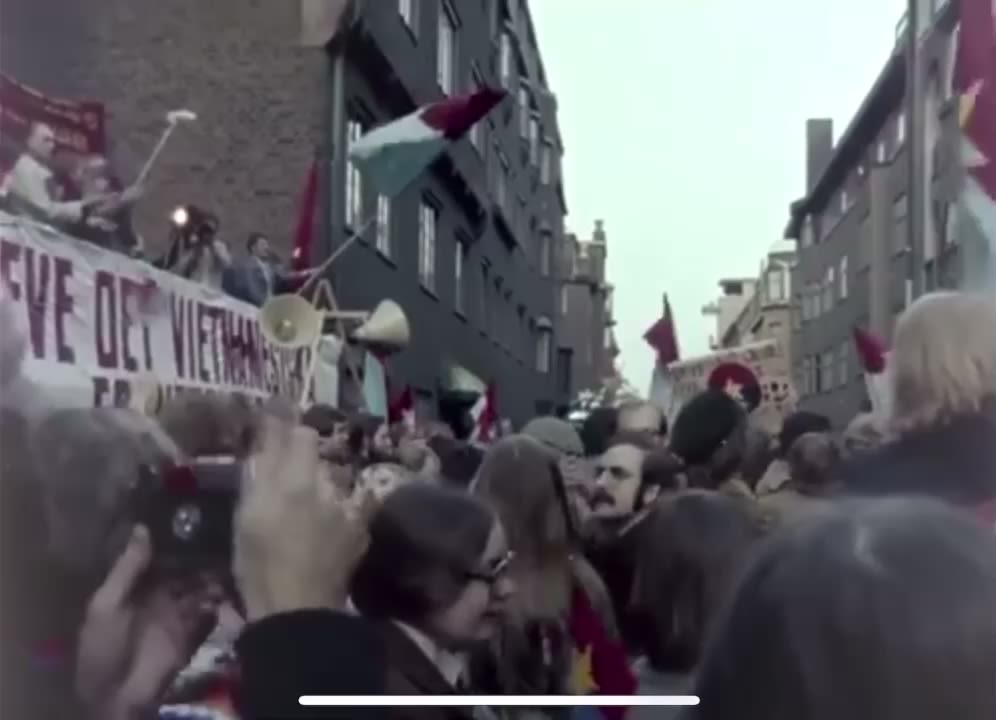
The extraordinary global solidarity — both material and spiritual — played a crucial role in sustaining Vietnam through its most difficult years and ultimately securing the final victory in 1975.
International goodwill remains enduring
In the shifting tides of the modern world, certain values prove more enduring than time itself: foremost among them is affection. For Vietnam, the affection of the international community since the post-war era has been not merely a beautiful memory but a precious foundation for the future.
Although half a century has passed from the shared hardships amidst the ruins of war to today’s vibrant cooperation, this bond has never faded; on the contrary, it has grown ever deeper and more enriching.
We express our profound gratitude to international friends – progressive forces, fraternal socialist countries, humanitarian organisations, and peace-loving people around the world – who accompanied and supported Vietnam throughout years of struggle for national liberation, as well as in post-war nation reconstruction and development
Party General Secretary To Lam
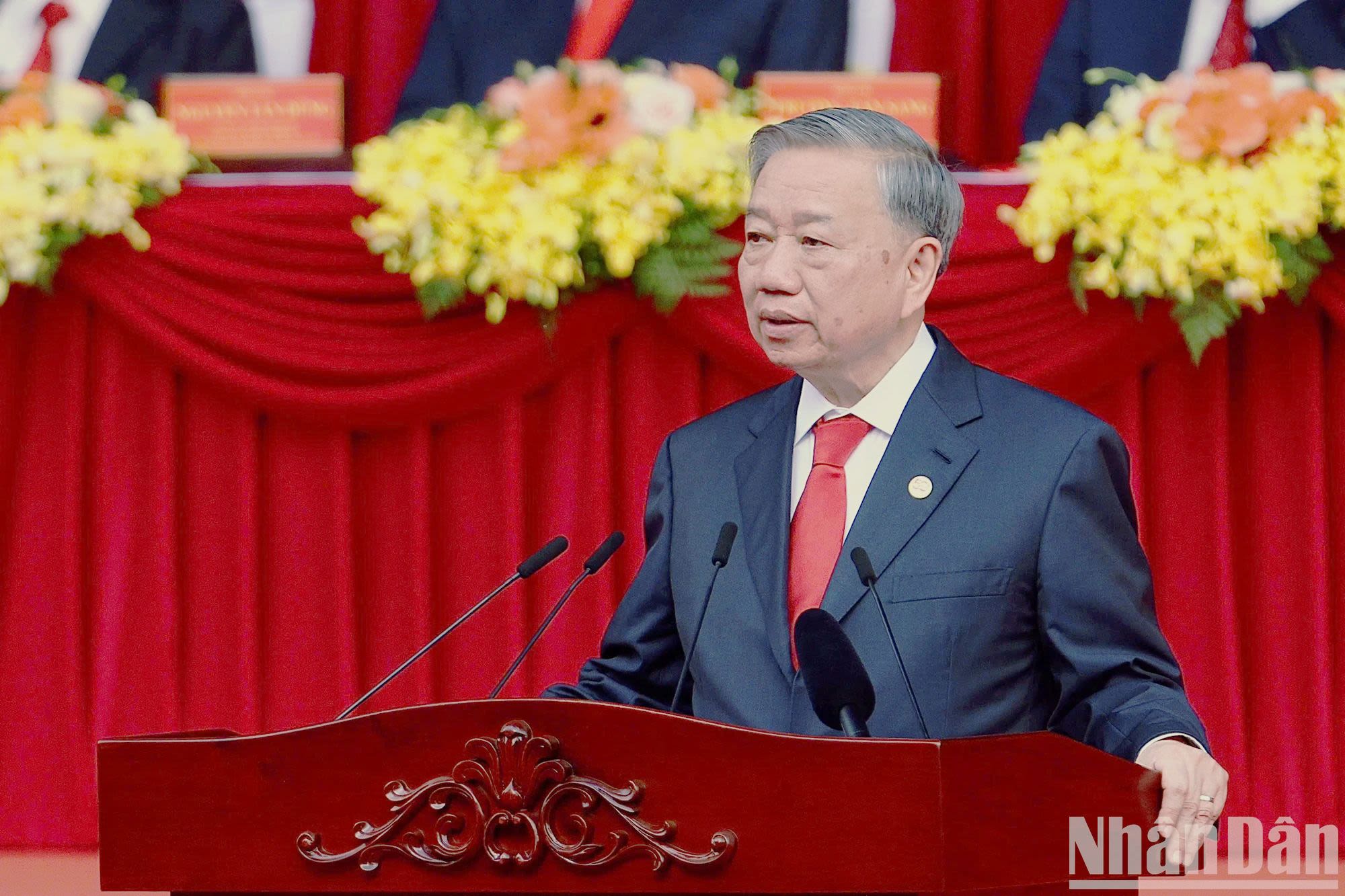
After the reunification day, Vietnam faced an enormous challenge: rebuilding the nation amid overwhelming difficulties. Vietnam continued to receive substantial support from international friends in its efforts to overcome the consequences of war, rebuild, and develop the nation.
The former Soviet Union, Cuba, the Eastern European countries, along with many nations across Asia, Africa, and Latin America, extended to Vietnam invaluable programmes of economic aid, human resource training, and technical assistance.
"I believe that further strengthening the comprehensive strategic partnership between Russia and Vietnam will be one of the key factors contributing to Vietnam's success on its path toward the 2045 goals."
Thang Long Bridge
Thang Long Bridge
Vietnamese Party, State and people have will never forget the wholehearted support of the former Soviet Union and Russia during the post-war reconstruction and peace-building period.
The former Soviet Union provided Vietnam with the large-scale aid —most of which was non-refundable.
Between the 1970s and 1980s, thousands of Soviet experts participated in the construction of industrial plants, infrastructure, and cultural facilities.
Russian Ambassador to Vietnam Bezdetko Gennady Stepanovich emphasised notable examples including the Thang Long Bridge over the Red River, the Hoa Binh Hydropower Plant—one of the largest in Southeast Asia—and the Vietsovpetro joint venture for oil and gas exploration on Vietnam’s continental shelf, which became a symbol of that era.
As a country that has consistently extended strong support to Vietnam, the Swedish Government initiated an aid programme to assist in Vietnam’s post-war reconstruction.
Swedish assistance focused primarily humanitarian sectors, such as healthcare and education, with major projects including the Bai Bang Paper Mill, Hanoi Children's Hospital (now the National Children's Hospital), and Uong Bi General Hospital. Sweden was a pioneering Western nation in supporting Vietnam’s Doi Moi (Renewal) process from its earliest days, offering valuable assistance in areas such as economics, finance, banking reforms, economic management, administration, and legal affairs.
Building on this shared history, the two countries continue to strengthen their friendship and partnership.
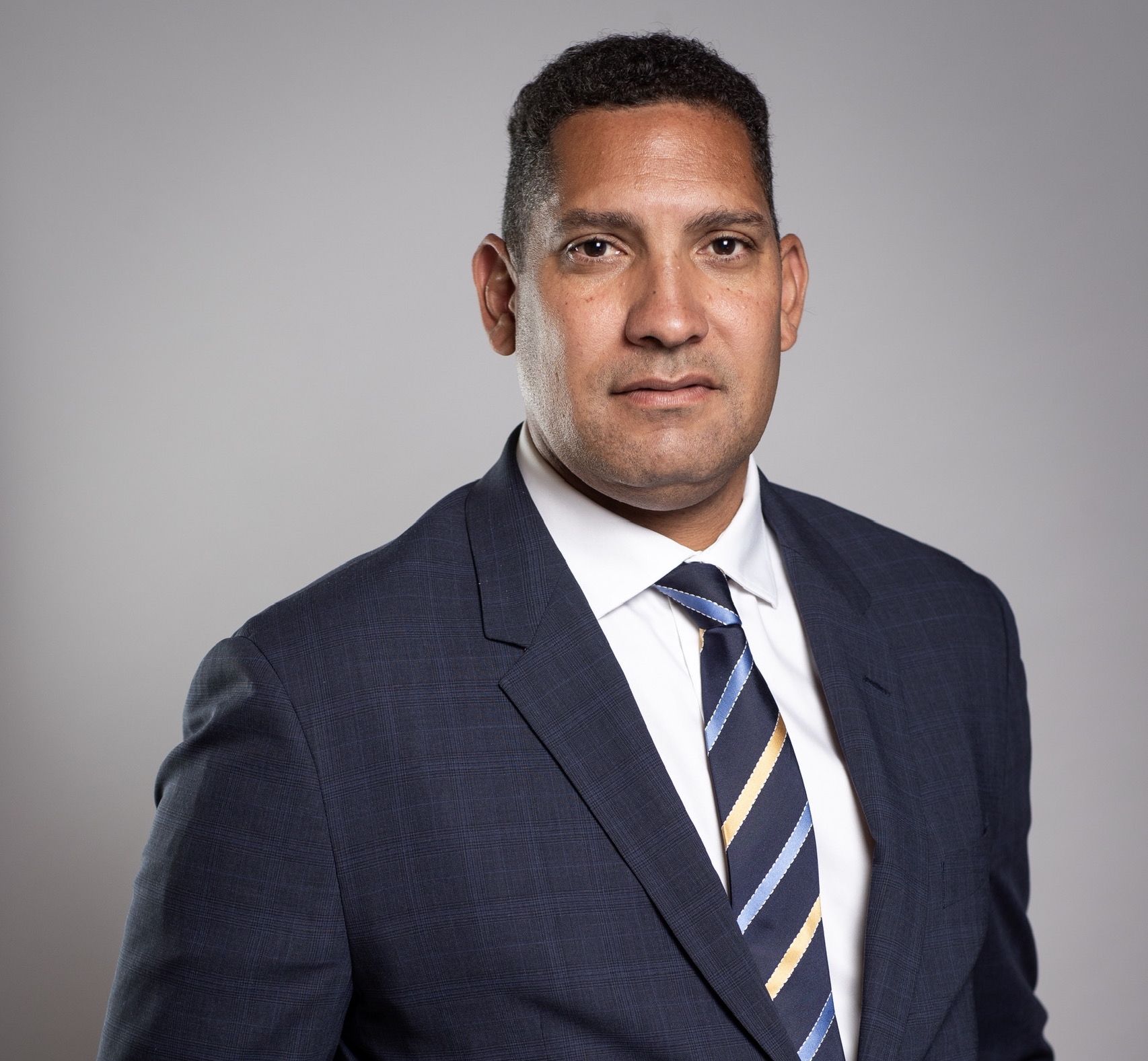
“Vietnam and Sweden’s relationship has always been grounded in mutual trust and respect. Today, it’s evolving into a more strategic partnership.”
Vietnamese people also cannot forget the Polish engineers quietly building the country’s first cement factories, or the Cuban experts imparting agricultural knowledge to the war-ravaged southern Vietnam. Cuba extended substantial aid to Vietnam, including the construction of the Vietnam–Cuba Dong Hoi Hospital and numerous healthcare and educational facilities. These actions were not merely acts of aid, they were also affirmations of the profound significance of Vietnam’s victory for the peace-loving peoples of the world.
The pivotal Doi Moi process marked a profound shift in Vietnam’s relations with the world. No longer merely a recipient of humanitarian aid, Vietnam progressively emerged as a model of resilience and growth as well as a proactive and responsible partner. More importantly, international affection for Vietnam has not diminished with this transformation. Instead, it has evolved from admiration for its struggle to respect for its achievements. Many countries and international financial institutions have become key partners of Vietnam. The World Bank (WB) and the International Monetary Fund (IMF) have provided billions of USD in concessional loans to help Vietnam stabilise its macroeconomy and develop infrastructure.
Since 1992, Japan has become the largest donor of official development assistance (ODA) to Vietnam, with a total loan value of approximately 2.55 trillion yen (equivalent to over 23 billion USD) by the end of the 2024 fiscal year.
The recent COVID-19 pandemic served as a test not only for healthcare capacities and economic resilience, but also for the spirit of international solidarity. Once again, Vietnam was not alone. Vaccines, medical equipment, ventilators, and medical masks through aid from the US, Japan, Australia, the European Union, Japan, the Republic of Korea, India, etc., further demonstrate the spirit of solidarity and international affection for Vietnam.
Furthermore, Vietnam not only received but also gave back. Shipments of “Made in Vietnam” masks and medical equipment to some Asian, European, and African countries have stood as a vivid testament to Vietnam’s commitment to reciprocating international goodwill with tangible action.
The affection of the international community towards Vietnam is a long journey, rooted in admiration for its unwavering spirit of struggle, nurtured by shared hardship, and strengthened by a bond forged in development. This invaluable asset is one that Vietnam treasures, preserves, and fosters, as it continues to move towards the future — a future of peace, cooperation, and prosperity for all.
Party chief To Lam affirmed: “Compassion, and forgiveness have helped our people gradually overcome pain, heal wounds, put the past behind us, respect differences, and look towards the future.”
“Compassion, and forgiveness have helped our people gradually overcome pain, heal wounds, put the past behind us, respect differences, and look towards the future.”
